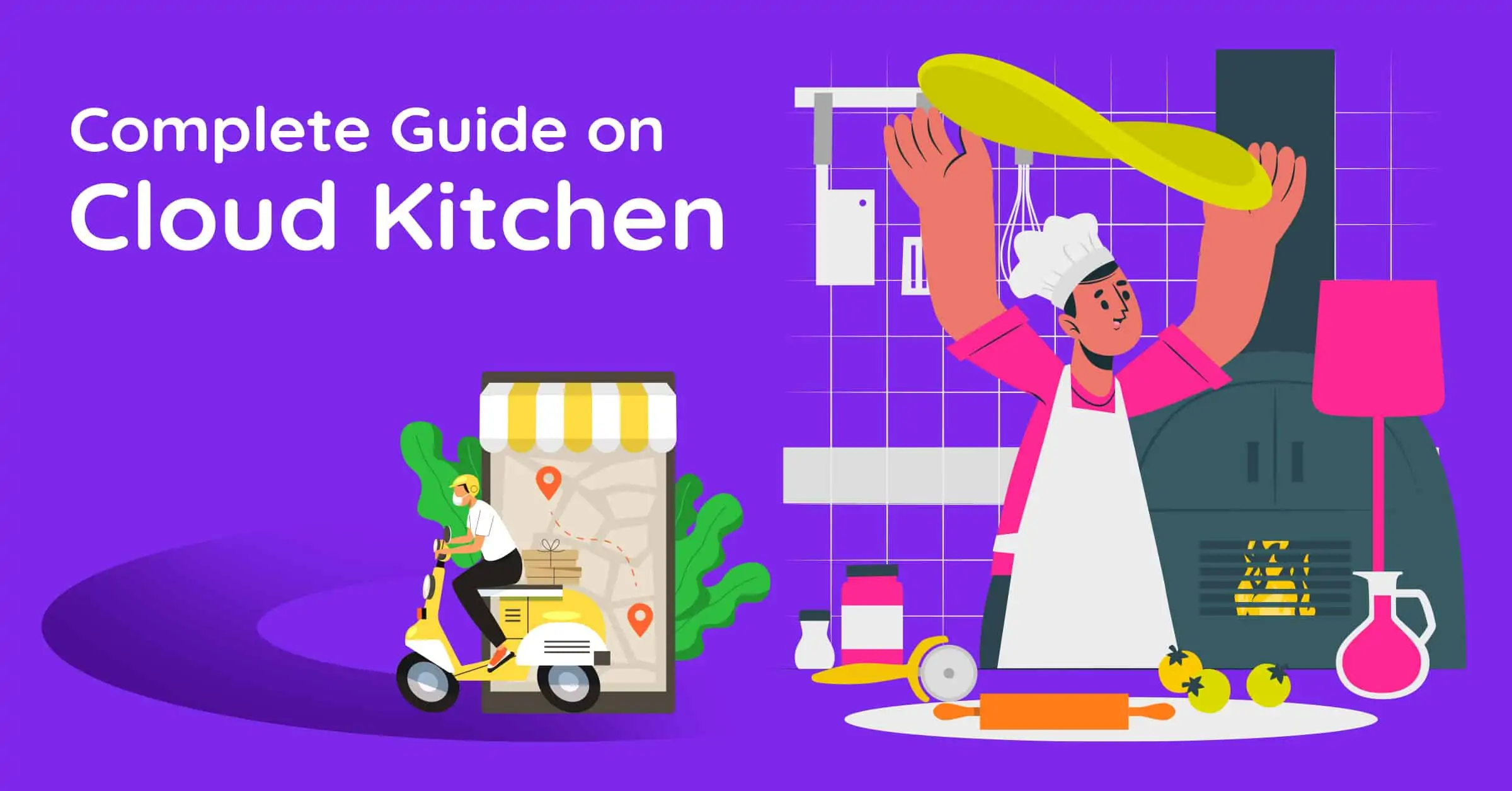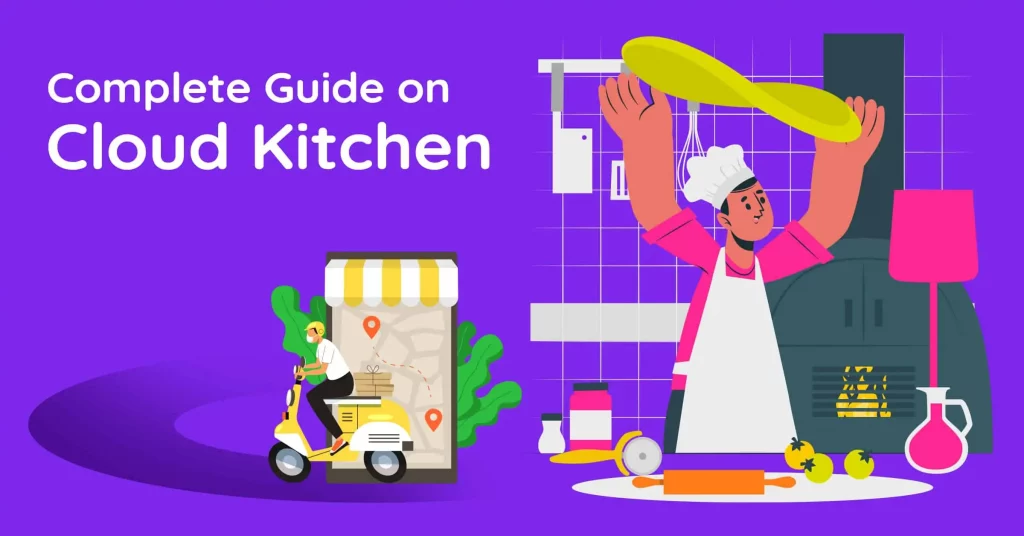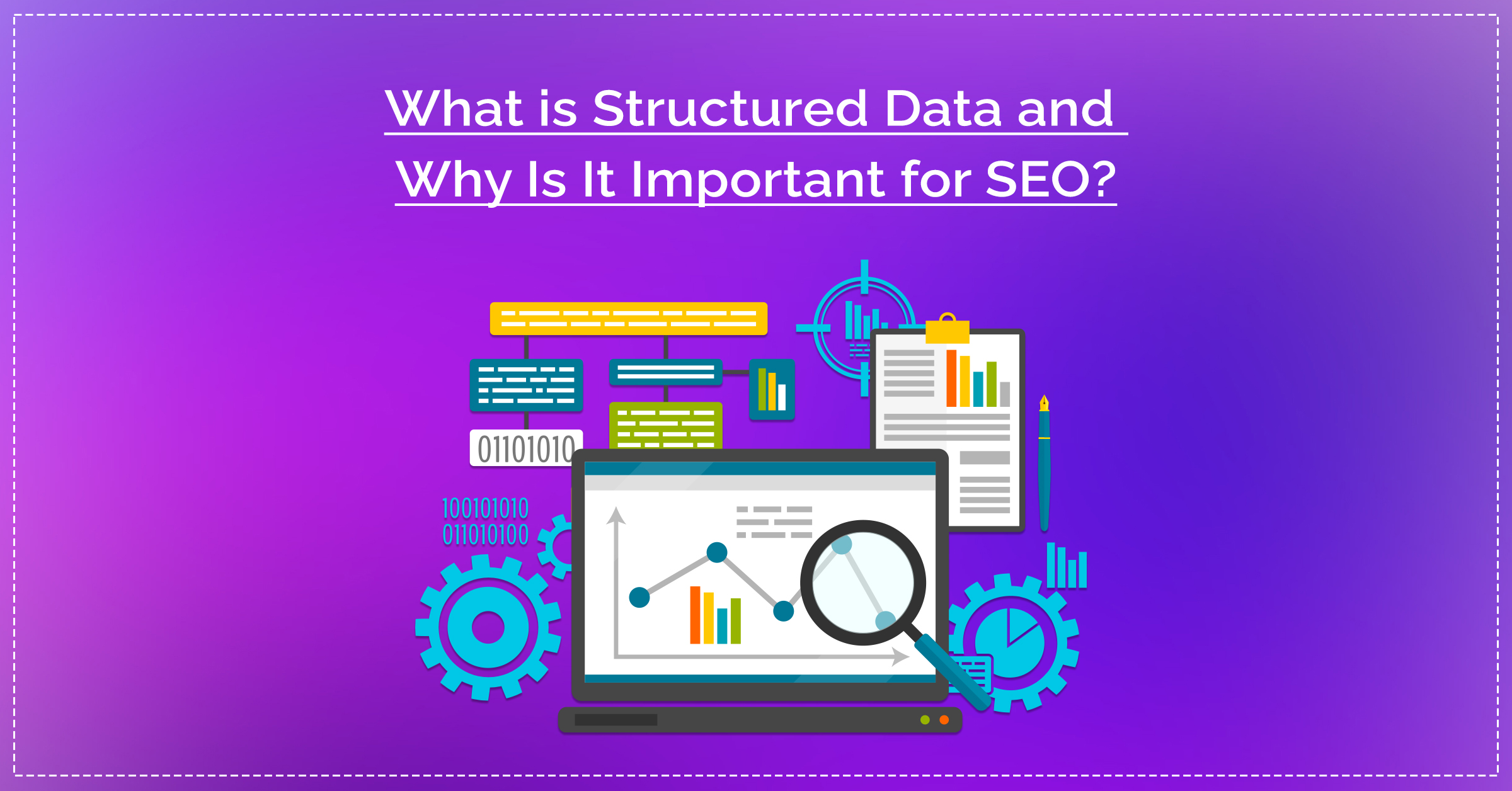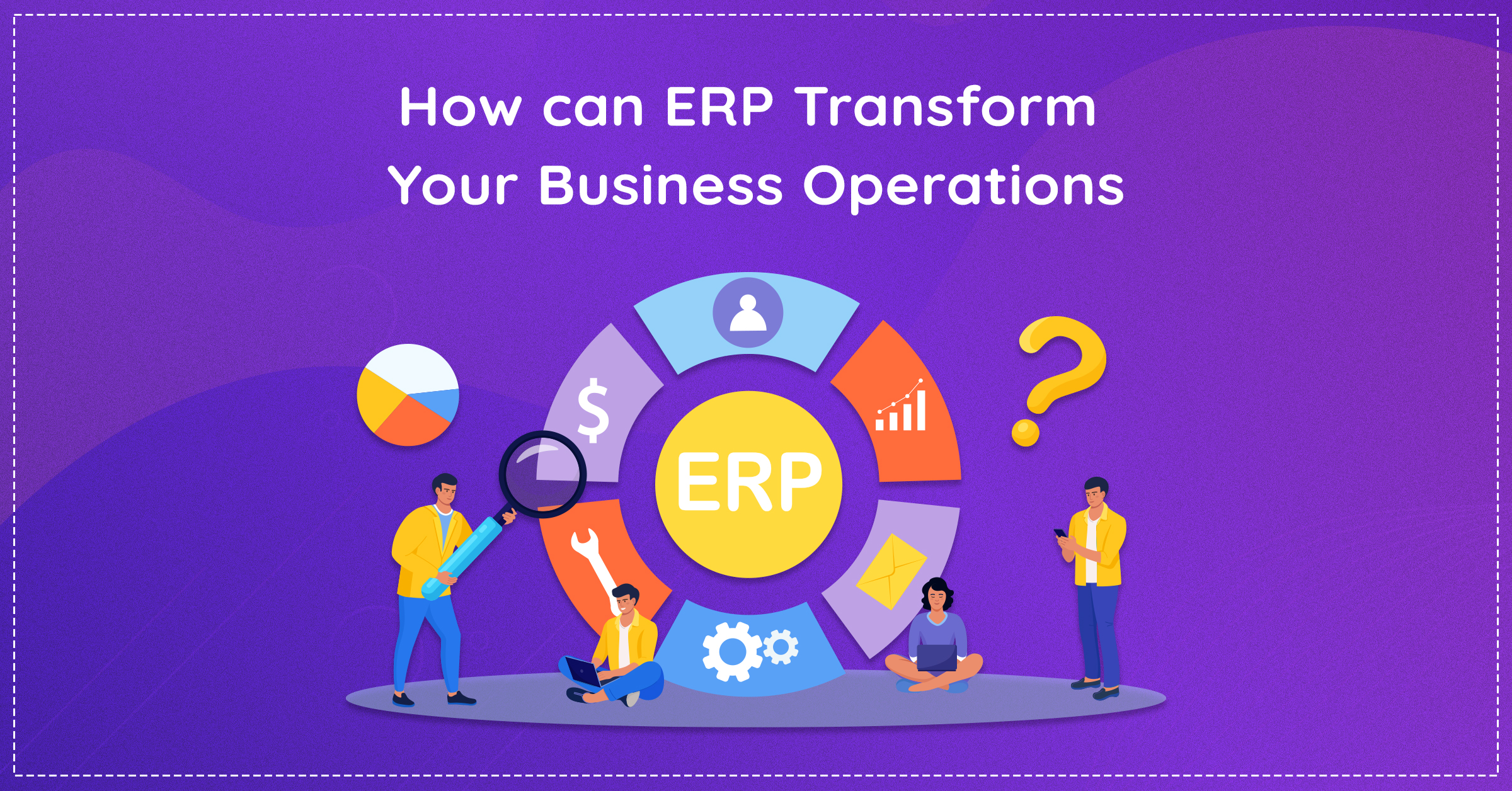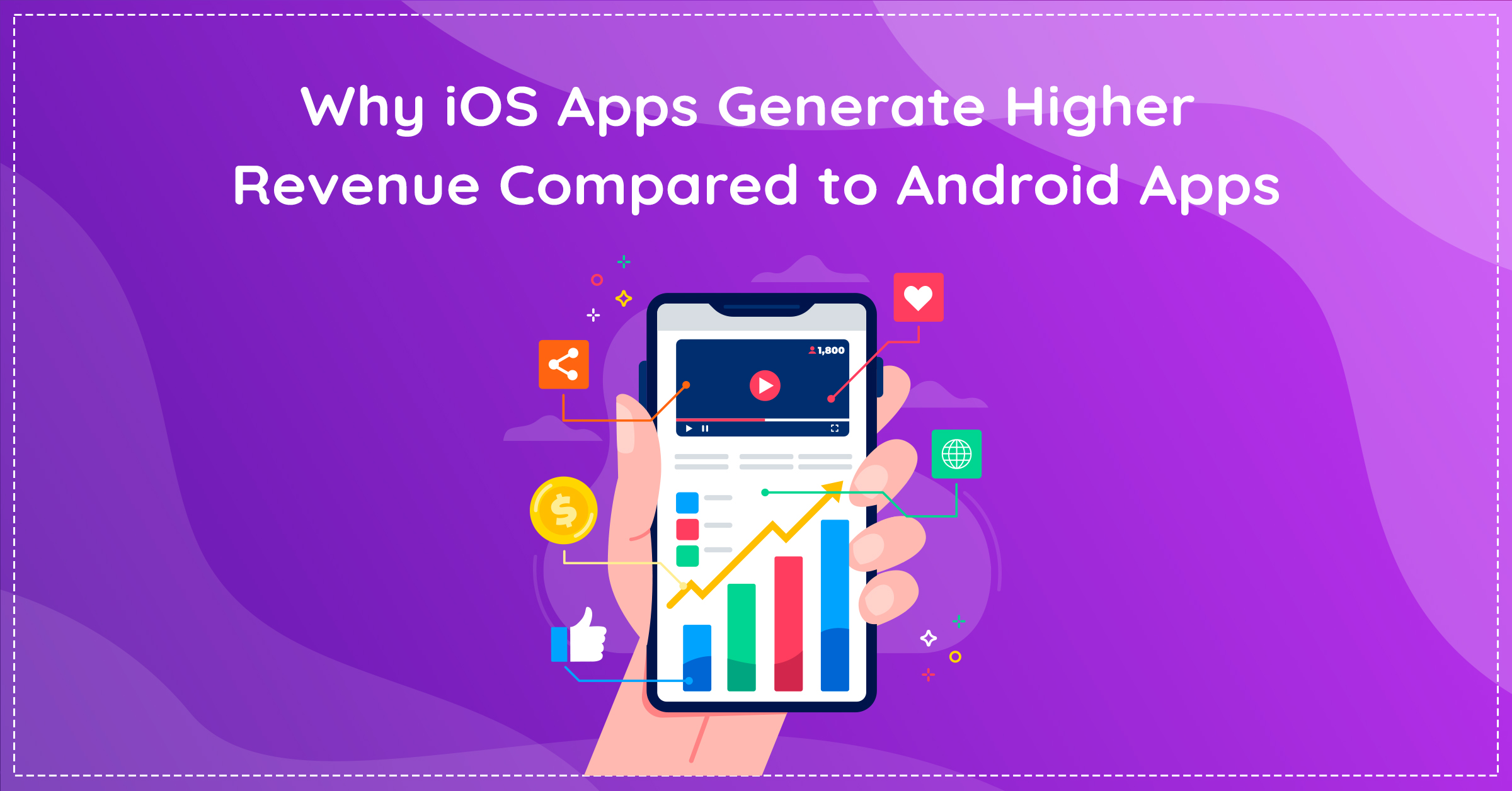The global pandemic in 2020 left the world economy in shambles. It affected the majority of industries across the world. The food industry is no exception. With stringent nationwide lockdowns imposed in various countries, restaurants witnessed a sharp decline in daily footfalls. Even after the relaxations, many restaurants around the world were operating at far reduced seating capacity.
In this highly competitive world, innovation is the key to success. Every tragedy presents an opportunity. The pandemic has taught the world that Digital is the way forward. For a restaurant business to thrive, it is time to go digital! How? It’s the right time to switch to the cloud kitchen business model!
This article will cover a comprehensive guide about cloud kitchens. From the basics of cloud kitchen to its benefits and challenges. You can even know the step-by-step guide to start a cloud kitchen in this article.
What is a Cloud Kitchen?
A cloud kitchen is a commercial food restaurant responsible for preparing and packaging of food. It is also called a ghost kitchen or virtual kitchen. Unlike conventional restaurants, cloud kitchens are delivery-only restaurants operating with minimal overhead.
These ghost kitchens have their own delivery service or they work with third-party delivery service to deliver food at customer’s doorsteps. The food orders are primarily taken via a digital medium (website, mobile app, or chat apps) and the package is delivered quickly, efficiently to the customer.
Cloud kitchens are new-age business models transforming the food industry and to keep up with the trends, many restaurants are happily accepting this model. The cloud kitchens have some distinctive features. They are easy to open and do not require a palatial space, unlike conventional restaurants.
You need not invest significant capital or hire an army of people to begin a cloud kitchen. You can begin your cloud kitchen in a small space along with a small team of chefs and earn handsome profits. Amazing isn’t it? Not to forget, a small space requires minimal maintenance and electricity costs.
With the rising popularity of online food delivery platforms such as UberEATS, Grubhub, Nextbite, Zull, Swiggy, and Zomato in the global market, cloud kitchens are gaining prominence across the world. The COVID-19 situation further aggravated the demand for cloud kitchens.
Owing to the convenience it offers, more and more consumers are increasingly turning to cloud kitchens. It’s a win-win situation for both business owners and consumers.
The primary functions of cloud kitchen businesses are accepting orders, preparing food, and partnering with prompt delivery services to deliver food at customer’s doorsteps. Cloud kitchens do not provide dine-in services and they deliver the orders virtually, which ensures no physical contact among the people.
Since we’ve so far covered the basic definition of cloud kitchen business, let’s check the difference between cloud kitchens and conventional kitchens.
How is Cloud Kitchen Different from Conventional Kitchen?
We are all familiar with flamboyant restaurants. Conventional Kitchens or restaurants are known for their exotic dine-in infrastructure, cozy lightings, prompt service, and delicious food. While cloud kitchen is a relatively newer concept, it has its own advantages. When you’re pressed for time or cannot step out of your home, your favorite dish is just a click away from cloud kitchen!
Let’s see how cloud kitchens are different from conventional restaurants.
Cloud Kitchen V/S Conventional Kitchen
To start a conventional restaurant service, you need a good sum of capital, an attractive spot, human resources such as managers, chefs, cleaners, waiters, sanitation facilities, and marketing strategies to attract customers. Sounds like a hefty task!
On the other hand, you can operate a cloud kitchen even from your home! All you require to operate your cloud kitchen business is a website or mobile app to accept orders, few chefs (or you can start even with one), a hygienic kitchen, a proper menu, a good packaging facility, and prompt delivery services. Sounds easier, isn’t it?
While conventional kitchens require a hefty amount of capital to function, cloud kitchens can operate with minimal capital investment. Restaurant rent getting heavy on your pocket? Switch to cloud kitchen model, minimal rent, maximum revenue!
Unlike conventional kitchens, cloud kitchens are only delivery-based food services, and hence, no need to hire servers, managers, and receptionists. Only a small team of chefs, cleaners and you’re set!
How Does a Cloud Kitchen Work?
We can broadly classify the operation of cloud kitchens into four steps. These include accepting orders via mobile app, preparing the food, packaging, and delivering the food. Let’s check each of the four stages minutely to understand the operations of cloud kitchens.
1. Accepting Orders via Mobile App
To run your cloud kitchen, you can either build your own app or collaborate with other third-party aggregators such as Zomato, UberEats, or Swiggy. There are an array of other food delivery aggregators available, you can run your operations by collaborating with them.
This will also help you reach out to a wider audience. You can register your restaurant and display a variety of food items on their mobile app. These food delivery aggregators charge a commission fee that ranges from 18-35% per order.
Using mobile apps to run your cloud kitchen business is the most convenient method. You can create a tech-savvy, user-friendly mobile app for your kitchen service.
Take help from an app development company and enrich it with premium functionalities. A seamless mobile app will help you in the long run when you scale your business.
2. Preparing Food
Once you’ve got your mobile app in place, it’s time to fix your menu and decide the food items you’ll be serving. While fixing a menu, it’s important to consider consumer behavior. Which type of food sells the most in the region of your business? Do your consumers prefer appetizing main courses or lightfast foods? You can do a comprehensive market study to fix your menu.
The next step is making a rational plan of your kitchen operations. Stock up your inventory and ingredients required daily. Buy the equipment you’ll require in your kitchen. Hire a few chefs who are adept in cooking lip-smacking food items on your menu.
Never compromise on the quality of food you serve. Healthy, delicious food will be the best testimony of your success. Always ensure proper hygiene in your kitchen, and encourage your team to never compromise on it.
Lastly, follow all the essential rules and guidelines laid down by local authorities (e.g. FSSAI set by the Indian Government). Get all the required certifications mandatory for your business.
3. Packaging Food
Now you’ve got a system to get orders, equipment, and chefs to prepare food, so what’s left? One of the most crucial parts of your cloud kitchen business. Yes, you guessed it right, it’s packaging your deliverables.
Wondering how packaging can be a crucial aspect of the cloud kitchen business? Well, have you ever ordered food online and received a torn or leaking package? Does the mere look at the package spoil your whole enthusiasm for eating restaurant food? That’s the reason quality packaging is so important, especially in cloud kitchen businesses that work entirely on delivery services.
Always make sure that you use proper air-tight containers, unspoiled boxes, foil papers, etc. This will keep the freshness of the food intact. A good presentation will also delight the customers and have them coming back to you, always!
Humble request – We request you to use the recyclable materials for your packing purpose. Your small step can be incredibly helpful for future generations.
4. Delivering the Food
Once all the previous steps are in place, you need to collaborate with prompt delivery services. Timely delivery plays a vital role in customer satisfaction. Hence, collaborating with these food delivery aggregators would help you ensure optimal consumer satisfaction as these aggregators provide seamless delivery services. Not just that, they also help you reach out to a wider audience.
Apart from tie-ups with external aggregators, you can even set up your own in-house food delivery system. Depending on your business volume, you can hire a few delivery boys on a full-time/part-time basis. With the help of your food delivery app, you and your delivery boy can receive notification of order details. You can track the status of your delivery too.
You can also offer a self-pickup option.
Operating cloud kitchens is relatively easy in today’s digital world. A properly created mobile app can help you intrigue your customers with your services, garner feedback, provide prompt services as well give 100% customer satisfaction.
Benefits of Cloud Kitchen
By now, you’d have known that Cloud kitchens/ ghost kitchens have a plethora of benefits. Let’s look at a few below:
1. Low capital investment
Since cloud kitchens work entirely on technology, there is no need for hefty capital investment for establishing them. Unlike conventional kitchens, foodpreneurs can save an enormous sum while starting a ghost kitchen. You can save huge money on the monthly rental costs and utility bills, which otherwise is a major expenditure for a conventional restaurant.
Unlike conventional restaurants which have a staff of 20-30 people including chefs, waiters, cleaners, managers, and receptionists, you can start a ghost kitchen by hiring 2-3 chefs and cleaners, respectively. This way, you can save up a significant amount of money which would have otherwise been used to pay the salaries of your employees.
Starting a cloud kitchen can be unique and probably the best business idea for emerging foodpreneurs.
2. Efficiency & Superior Quality
Unlike conventional restaurants which deliver dining service as well as parcels, cloud kitchens only work on parcels. This leads to better efficacy and superior quality. In cloud kitchens, food can be prepared within a short period by batching similar ingredients together. To ensure top-notch quality, you can hire a quality tester who can supervise the food packaging and ensure superior quality.
Moreover, with the right use of technology, you can always optimize your services in the cloud kitchen business.
3. Lower Marketing Cost
Conventional restaurants have to spend enormous amounts of money to get a restaurant space in a prime spot. Moreover, they have to spend extra money to display hoarding and print advertisements in local newspapers. Marketing is vital to increase daily footfalls.
On the other hand, cloud kitchen businesses allow you to promote your business via social media. You can either run paid ads on different social media channels or stick to organic marketing for creating your brand’s awareness among its potential audience.
You can use your funds in Digital Marketing which is cost-effective, measurable, and promises a great return on investment. Check out our special SEO guide for small businesses. It includes a lot of DIY strategies that can help you capture the local audience.
Startups in Cloud Kitchen Industry
1. Oven Story

Cloud kitchen magnate Rebel foods have established the Oven story, Behrouz Biryani along with Faasos in India.
Oven Story Pizza functions as a large-scale cloud kitchen and conventional kitchen business model with several outlets in India. It provides dine-in services as well as acts as a virtual kitchen. Beloved among the young generation of India, Oven Story Pizza has the reputation of serving lip-smacking pizzas at optimal rates.
2. Faasos

The journey of a renowned cloud kitchen business-Faasos serves as an inspiring story for all the budding foodpreneurs. Faasos was initially incorporated in 2004 as a means to deliver fresh food items to every doorstep in the city of Pune. It took approximately 7 years for this company to thrive in the industry.
In 2014, Faasos launched its app and closed the ties with another partnering online food delivery service to operate independently.
As of 2017, Faasos has outlets in 20 major cities in India and it is operating in more than 150 locations. Also, the company is generating over 30,000 orders every month via its app.
3. Behrouz Biryani

Last but not least, Behrouz Biryani is one of the top players in the Indian cloud kitchen market of present times.
Behrouz Biryani is a cloud kitchen business offering delicious Biryanis throughout the country. The brand claims to bring the lost recipe of the kingdom of Behrouz when it was invaded by Cyrus King 2000 years ago.
Behrouz Biryani is known for its hygienic preparation of food while maintaining its taste and quality.
4. Keatz

Since its launch in 2016, Keatz is one of the growing cloud kitchen businesses in the European continent. Keatz has successfully expanded to almost 10 countries in Europe serving the most delicious food at the doorstep of their customers.
Now, it also operates in major European cities like Berlin, Amsterdam, Munich, Madrid, and Barcelona. Keatz serves the most delicious food from renowned restaurants within just a click! If you’re looking for mouthwatering food to satisfy your craving, head straight to Keatz to get it delivered within minutes!
Challenges in Cloud Kitchen
Every coin has two sides so does cloud kitchen services. Learning about the challenges in operating cloud kitchens will help you to come up with new strategies to tackle them.
1. High Commission Cost

Though cloud kitchens eliminate real estate expenses, the costs of commission maintenance are a major concern of this business model. At times, the cost of commission fees paid to aggregators is exorbitant.
The commission fees are one of the major sources of expenditure. At times, the amount gets stuck due to delays in delivery or customer review. Such glitches can affect your business operations and even deteriorate customer satisfaction.
Hence, a better alternative would be to build your own technology platform to capture orders and deliveries. This would improve your efficiency and also eliminate high commission costs.
2. Operating Cloud Kitchens

Operating cloud kitchens is completely different from conventional kitchens. The most crucial aspect of conventional kitchens is ‘service at the table’. Any minor catch in the food or the service can be corrected upfront. On the other hand, in cloud kitchens, once the food is packed no changes can be made. Thus, ensuring food quality in the first place must be the utmost priority of cloud kitchen service.
In the cloud kitchen service, one has to maintain a seamless system of accepting orders, preparation time, and delivery time. Any sort of loophole in the working of either of these three processes might deteriorate the whole customer experience.
3. Getting Relevant Permissions

There are certain licenses a cloud kitchen business must acquire to operate in any country around the world. For example – In India, you need FSSAI accreditation, GST Registration, health and trade license, Signage license, fire license, pollution certificate, PFA clearance certificate, and Night Operations license to begin your cloud kitchen.
Acquiring licenses can be a straining process in any country. Therefore, it is one of the most difficult challenges of operating a cloud kitchen business.
4. Alignment of all Stakeholders

In the cloud kitchen business, it is vital to align all the stakeholders and make them work towards a common goal. Stakeholders like delivery boys may or may not be full-time.
If they’re not full-time, it is crucial to work with a result-oriented delivery partner so that they deliver food on time and in proper condition. Delivery forms the crux of your business. It massively contributes to customer satisfaction.
Similarly, work with an app development company that provides timely maintenance service. There should be no technical glitches in your app, at any cost! Hence, alignment of the stakeholders is pivotal for the success of your business.
How to Start a Cloud Kitchen?
1. Create a Proper Business Plan

To initiate a profitable cloud kitchen business, you need to define three things beforehand. Your target audience, the geographic location of your catering services, and the menu you’ll serve.
Target audience:
Your target audience is your potential customers. Define who they are. Are they students, bachelors, or couples? This will help you to understand the needs of your potential customers and serve them efficiently.
Geographical Location:
Defining the geographical location for your catering services will help you to manage the deliverable timings and give prompt services to your customers.
The menu:
Since cloud kitchens are delivery-based services, the menu offered to the customers must differ from conventional restaurants. You have to ensure that the food offered must not get soggy or lose its consistency by the time it is delivered. Keep food items on the menu that can stay untouched even during delivery.
2. Tie Up With Aggregator Or Build Your Own Tech-Savvy Mobile App

How will you reach out to a wider audience? How can customers order food from your restaurants? A mobile app is an answer to all these questions. You can either build your own food catalog app or collaborate with other food delivery aggregators.
Collaborating with other aggregators is beneficial in the beginning as it helps you reach out to a larger audience. You can register your restaurant and display your food products on their apps. These aggregators charge an 18-35% commission fee per order. Moreover, they offer good delivery services which further adds to the customer experience.
You can even build your own food delivery app. A user-friendly interface, aesthetic design, easy navigation, and premium functionalities are some must-have features in your online food delivery app. You can hire an in-house team and build a food delivery app of your own. You can select the right platform and include all the above-mentioned features in your app.
To incorporate all these premium functions and more, you can also work with an app development company. Brownie points if the company is adept in understanding the online food delivery business and offers a food delivery app as a solution.
At Eiosys, we have helped several businesses create food delivery apps. Whether you’re looking for a single-vendor or a multi-vendor food delivery app, our team can customize the app as per your requirement.
Dashboard, order summary, analytics, GPS-based location search, push notifications, multiple payment gateways, and more, you name the feature and we provide it! That’s not it, we even train your team to use the app effectively. For all the maintenance-related work, our team is always a call away!
3. Get Your Infrastructure in Place

While starting a cloud kitchen business from scratch, an entrepreneur will need the following things.
Proper Capital:
Since cloud kitchen businesses can operate even with minimum capital, bootstrapping can be an option for an entrepreneur to gather the capital for starting his online food business. Other than that, one can even take loans from banks, friends, relatives, online funding, etcetera.
A space for preparing and packaging food:
Unlike conventional kitchens, cloud kitchens don’t require hefty areas of land and cosy infrastructure. Even a 300 to 350 square feets area with a properly equipped kitchen will allow you to operate a cloud kitchen business seamlessly.
Cooking Equipment and Health and Sanitation facilities:
Ensure that the place has proper tap water facilities and proper hygienic facilities. Buy the necessary cooking equipment for preparing the food along with packaging containers, wrappers, tissues, etcetera. Always ensure that the working staff wears gloves in the kitchen and properly clean the vegetables and meats before cooking.
Packaging:
Always ensure unspoiled packaging.
Collaborate with Delivery Services:
As mentioned earlier, prompt delivery services are very crucial in operating a cloud kitchen business. Ensure that your partnering delivery services provide safe and secure delivery with polite courier subordinates as they’ll represent your brand to your customer.
4. Accept Order, Prepare, Package, Deliver and Repeat

Once you have a mobile app in place, an area to operate your business, few chefs, equipment and delivery facilities, it’s time to grow your business by serving your customers.
Cloud kitchen businesses work entirely on technology thus, it is essential to ensure that your app is free from any sort of glitch. Also, if any loopholes are found in the working of your business and it is not mended timely, it can even result in the breakdown of your business.
It is of utmost vital to ensure a free flow of movement among all the four divisions of your business namely the mobile app, preparation, packaging and delivery.
5. Digital Marketing is the Key to Growth

So far, we’ve covered all the essentialities of operating a cloud kitchen business in India. The last step is to grow your business. Follow the below steps to grow your business.
Create brand awareness through social media: Creating brand awareness through various social media platforms is being widely accepted by many cloud kitchen businesses in India. Make use of social media to portray your brand’s voice, engage with your target audience and turn them into potential customers. Social Media Marketing (SMM) is also one of the best possible ways to generate customers for your cloud kitchen business.
Always appreciate customer feedback and provide prompt customer services. This will allow you to gain customer loyalty. You can even equip your website or mobile app with a chatbot.
Lastly, always keep your app, social platforms and website updated. You can also run performance ads for higher conversions and to boost your orders. Performance ads can skyrocket your sales. Initially, running a performance ad and targeting people within a particular geography could be a killer marketing strategy.
Bottom Line
Owing to the ease of use and convenience, cloud kitchens are transforming the food industry. Moreover, they are here to stay. So, why tie up with third-party apps and share profit margins when you can create your own cloud kitchen business model? Cloud kitchens offer a great business opportunity to all the budding entrepreneurs. With minimal investment, you can enter a huge market and stand a chance to earn handsome profits!
Do you want to be the next Zomato or Swiggy? They started small, but eventually made it big. It’s the start that matters. You can start operations from your house. What about mobile app? Worry no more! Eiosys will help you create a seamless, user-friendly food delivery app which can be scaled later! So, start today to get a lion’s share of profit in this booming industry!


